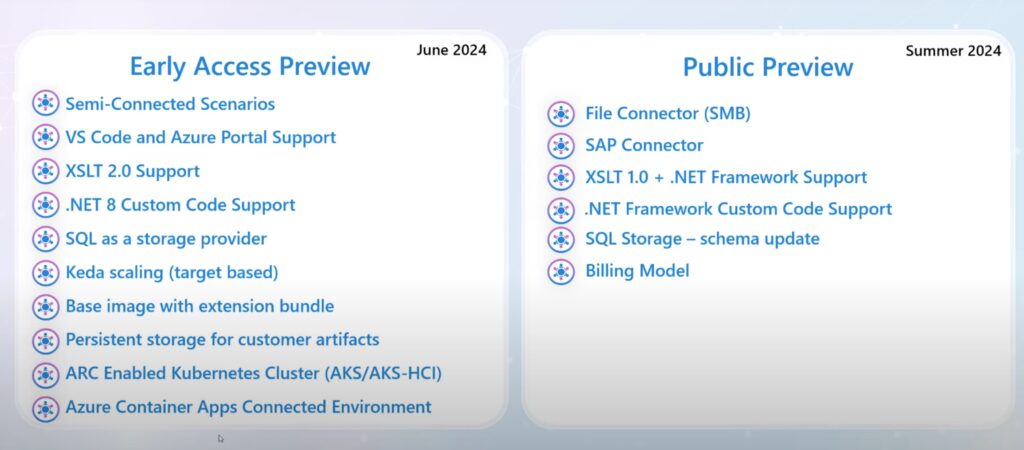
Microsoft has enhanced its low-code workflow service, Logic Apps, with C# inline actions and the ability to deploy workloads on-premises or on other clouds, while still managing them from Azure. A previous offering, Arc-enabled Logic Apps, will no longer be developed.
The new hybrid option is based on Azure Container Apps, running on customer-managed infrastructure, and connected to the cloud using an Azure Arc agent. This means the workload has local processing, local storage and local network access, but can be managed and monitored through the Azure portal. Kent Weare, principal pm manager for Logic Apps, explained that in the event of intermittent connectivity, the workload will keep running, so it is not dependent on the connection to the cloud.
Reasons for running on-premises or on other clouds include migration from BizTalk Server, regulatory compliance, proximity to local line-of-business applications, edge applications, and multi-cloud support.
A point of confusion is that Microsoft already had something called Arc-enabled Logic Apps in preview. This also used Arc and Kubernetes, but the plumbing was different, using App Service on Arc rather than Container Apps on Arc. Weare said that Microsoft was now committed to the Container Apps solution and the older preview is “something we will not be investing further in.” He also promised the new preview will reach general availability in a timely manner.
The new hybrid service is now in private preview, with public preview promised for later this summer. Developers should note though that Azure Container Apps on Azure are also in preview, suggesting caution. These previews are not supported for production use.

“This feature is highly impressive and long-awaited” remarked a customer, though they also found that integration with Visual Studio Code did not work. “This newly released feature is supported for Azure Portal only for now,” said a Microsoft team member.
Another preview enhancement for Logic Apps is the addition of C# inline actions, though only for the more expensive Standard plan. This means developers can add .NET code within the Logic Apps designer, making it easier to overcome limitations of the low-code approach by adding custom logic.

A common question is how Logic Apps differ from Power Automate, which is also a workflow automation tool. Microsoft has an article on the subject explaining that Power Automate is built on Logic Apps but is aimed at Office 365 users, whereas Logic Apps are designed for developers and IT administrators, and supports Visual Studio and VS Code as well as a web-based designer.
Logic Apps use some of the same connectors as Power Platform, and most Power Automate or Power Apps connectors work with Logic Apps. There are hundreds available, allowing connections to many Azure and Microsoft 365 services, GitHub, as well as third party services such as Adobe Acrobat Sign, Amazon S3, Salesforce, Dropbox and many more.
